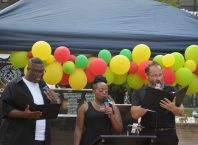East Texas is a land of immense diversity. Much of the area is dominated by what is simply known as the Piney Woods ecoregion, a 54,000 square mile area shared with Louisiana, Arkansas and Oklahoma.
Like ecosystems across the southeastern United States, The Piney Woods are critically endangered through a combination of fire suppression, industrial practices and development.
How can East Texans live in a healthy relationship with their natural environment, and what’s at stake when we don’t?
This three-part series will explore the history of the environment of East Texas, how it was and is exploited for profit and the human cost of exploitation, emphasizing racial injustice.
In this second installment, The Tyler Loop examines how white settlers’ farmlands, enslavement of people and oil extraction changed the face of East Texas’ ecology forever. To read about the Caddo relationship to East Texas ecology, read our first installment here.
Conquest of “its wilderness state”
After years of attempting to persuade its own citizens to settle in Texas to no avail, the Spanish invited Anglos into Texas, beginning in 1820.
Despite Spain having authority over Texas for over 300 years, only Nacogdoches, San Antonio de Béxar and what is now known as Goliad (then La Bahía del Espíritu Santo) boasted any sizable population.
A series of small struggles would break out between Spanish imperial forces and homegrown separatists. This movement would eventually culminate in open revolution and Mexico’s Independence in 1821.
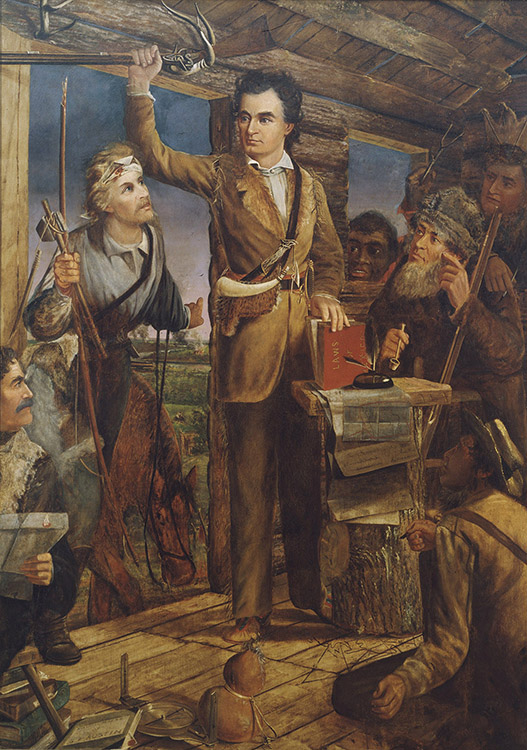
Mexico would follow the precedent of allowing Americans to enter Texas. Starting in 1824, Texas was combined with the present day Mexican state of Coahuila, known as Coahuila y Tejas. The bulk of pioneers would venture there from the southeastern U.S.
A preeminent idea of the colonizers was manifest destiny: The lands of North America were destined to be the United States, and most importantly to them, white.
Settlement in Texas was perceived as a mission. As described in “Settlement and Environmental Change in Texas” by Robin W. Doughty, Austin preached an aggressive position toward the region’s biological system. He called for settlers to assist in the conquest of Texas “from its wilderness state.”
Settlement and slavery
Stephen F. Austin, called the father of Texas, would become an empresario in 1823 and settle some of the first American families in the state. Austin summed up the motives for which Americans were moving into Mexico in a letter written in 1832. “Nothing is wanted but money…” As for the means by which the money would be made, “…Negros are needed to make it.”
The Old Three Hundred refers to the first three hundred families Austin settled between 1823 and 1827. They were mostly wealthy families from across the southern U.S.
Slavery was prolific in Austin’s colony, which is now the area surrounding Brehenam, Navasota and La Grange. In 1825, 25% of the area’s 1,790 people were enslaved.
Throughout the Mexican Revolution, prominant Mexican revolutionary figures would take a stance against slavery, described in “Seeds of Empire: Cotton, Slavery, and the Transformation of the Texas Borderlands” by Andrew J. Torget.
In July of 1824, a bill banned the “commerce and traffic in slaves.” It said any enslaved person would be freed by “the mere act of treading on Mexican soil.”
The act would ultimately do little to stop slavery in Texas. Austin as well as his allies, including Erasimo and Juan Seguín, would fight or outright ignore further efforts to stamp out slavery in Texas. Texas Independence in 1836 would protect the institution from further encroachment.
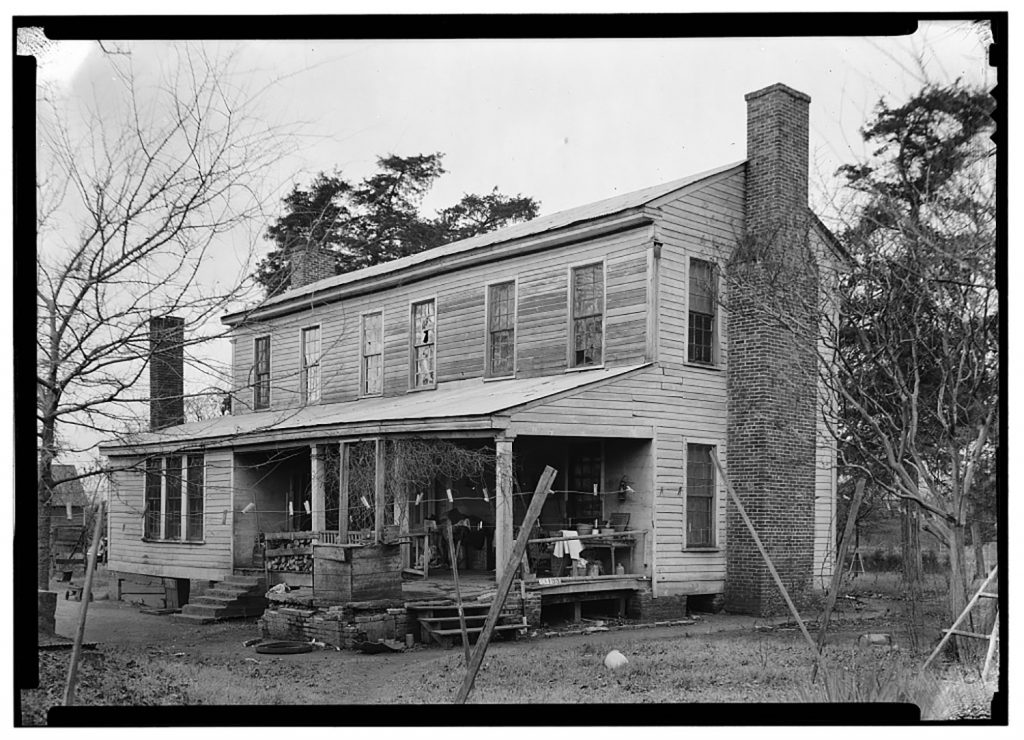
Most of the earliest plantations in Texas would lie in Austin’s colony along the Brazos, Colorado and Navasota rivers. Due to resistance to colonization by indigenous people, including Cherokee, Kickapoo, Shawnee and Delaware groups, much of Northeast Texas had little white population.
After the Battle of the Neches in Van-Zandt County in 1839, that changed. The President of the Republic of Texas, Mirabeau B. Lamar, declared an “exterminating war” against the indigenous people across Texas. Thereafter, only the Alabamas, Coushattas and a small number of Caddos remained in the region.
The Caddo would ultimately be removed from their final bastion surrounding Caddo Lake to the Brazos Reservation in 1855. Similarly, the Alabamas and Coushattas were placed on the reservation where their descendants still reside in 1855.
The actions of the Republic of Texas and the U.S. can only be described as a genocide. At the time, only approximately 1,000 Caddos remained. Shortly thereafter, they were relocated to Oklahoma.
White settlement and the plantation industry would expand into Northeast Texas soon after. Some of the earliest white people to move into the area that is now Smith County held people in bondage.
According to James Smallwood in “Born in Dixie: Smith County Origins to 1875,” James Calhoun Hill was one of the earliest settlers to the area. After being run out of the county by natives four years prior, Hill and a group of others would settle in an area known as Pleasant Hill between present day Whitehouse and Bascom, in 1843. He and several others of his party would acquire slaves shortly thereafter.
Smith County would be formed from Nacogdoches County in 1846. By 1860, the population had risen to 13,392 people — 4,980 of whom were enslaved. Only two free Black people were documented.
Harrison County to the east had one of the largest enslaved populations in the state. In 1860, 8,784 people were enslaved Black people. This exploitation made it the wealthiest county in the state, producing 21,440 bales of cotton in the same year.
| Slaves by County in East Texas, 1860 | |
| Harrison | 8,874 |
| Rusk | 6,132 |
| Smith | 4,982 |
| Walker | 4,135 |
| Upshur | 3,794 |
| Anderson | 3,668 |
| Cass | 3,475 |
| Cherokee | 3,246 |
| Panola | 3,085 |
| Red River | 3,039 |
Caption: Sourced from US Census Data, 1860
Some of the old plantations dependent on slave labor, such as Mimosa Hall in Harrison county, built in 1844, and the Dewberry Plantation in Smith County, built in 1852, are still standing today.
Material value takes hold
How would white settlement and the plantation settlement impact East Texas ecology?
Indigenous people, enslaved African-Americans, wildlife and the land itself suffered abuse. Of early Texans, Doughty wrote, “What people saw in the three natural regions of Texas were objects having material and functional significance, rather than biological and ecological value.
“Landscapes appeared as discrete units of so much valuable timber, or acres of fertile soils and pasture, or areas abounding with game animals, not as environments containing systems of life with linkages that sustained the character and structure of the biological communities that composed them.”
According to Doughty, native predatory species such as wolves, bears, cougars, jaguars and alligators were seen as a nuisance by colonizers and killed indiscriminately.
Explosions in farmland changed the face of East Texas forests and their habitats. Doughty writes, “Federal statistics from 1850 through 1890 show striking increases in the amount of land in agriculture.”
Doughty said that in 1850, Texas reported almost 644,ooo acres in improved farmland, ranking 27th in the nation. By 1890, overall farmland had increased from 11.5 to 51.4 million acres.
“Texas led the nation in land in farms.”
Following the Civil War, slavery would be replaced with the sharecropping system. Landowners would contract out workers to live on their land in exchange for food, lodging and tools. In theory, all earnings would be split equally at the least.
According to Smallwood, this was rarely the case. The bulk of sharecroppers were former slaves and their descendants or poor whites who did not have access to education. Land owners, many of them former slave masters, abused their workers.
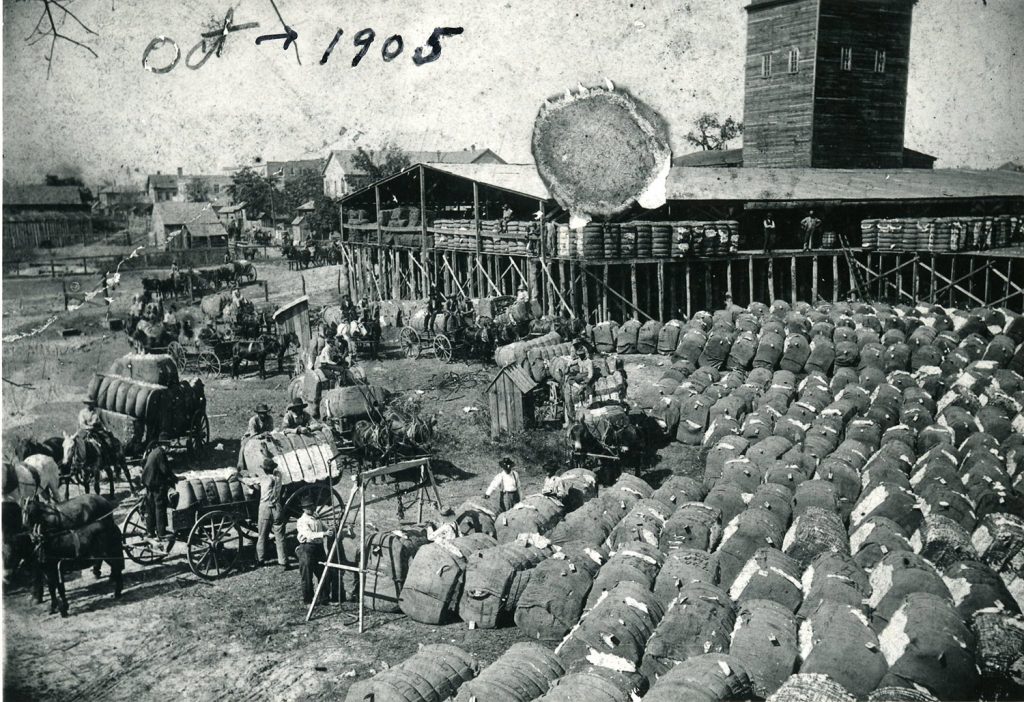
In Tyler, accounts by tenants frequently reported being cheated out of wages or crops.
Likewise in Smith County, many of the former plantation class would remain under control of their former masters.
Samuel A. Goodman, a former slaver, lost most of his wealth after the Civil War. He would convert his 600 acre plantation into a sharecropping operation, exploiting the same people as prior. According to Smallwood, he was quoted stating, “Nearly all of my _____ stayed with me … I added some others.”
Sharecropping became prolific across Northeast Texas. Smith County would be the leader in cotton production in the region from 1872-1900.
Lumber leaves its mark
Logging would also emerge in East Texas shortly after Anglo colonization. One of the earliest recorded sawmiills in the region was built by Peter Ellis Bean in 1829 on Carrizo Creek in Nacogdoches County.
Early sawmills operated locally as the isolation and lack of fordable rivers in East Texas made large-scale logging difficult. Reconstruction and post-Civil War industrialization would change that.
Starting in 1876, East Texas would enter its so-called bonanza period.
Expanding railways would broaden access to timber further inland and away from rivers. The first large-scale industrialized mill was built in 1877 by Henry J. Lutcher and G. Bedell Moore in Orange County.
Lumber barons were able to buy land for as little as $1.25 cents an acre. Industrialized practices singled out virgin stands of longleaf and shortleaf pine, as their lumber was more profitable.
Shortleaf were singled out for their reputation of having a strong grain and weather resilience. By the mid 1800s, most of the stands in its easternmost range on the East Coast had been wiped out.
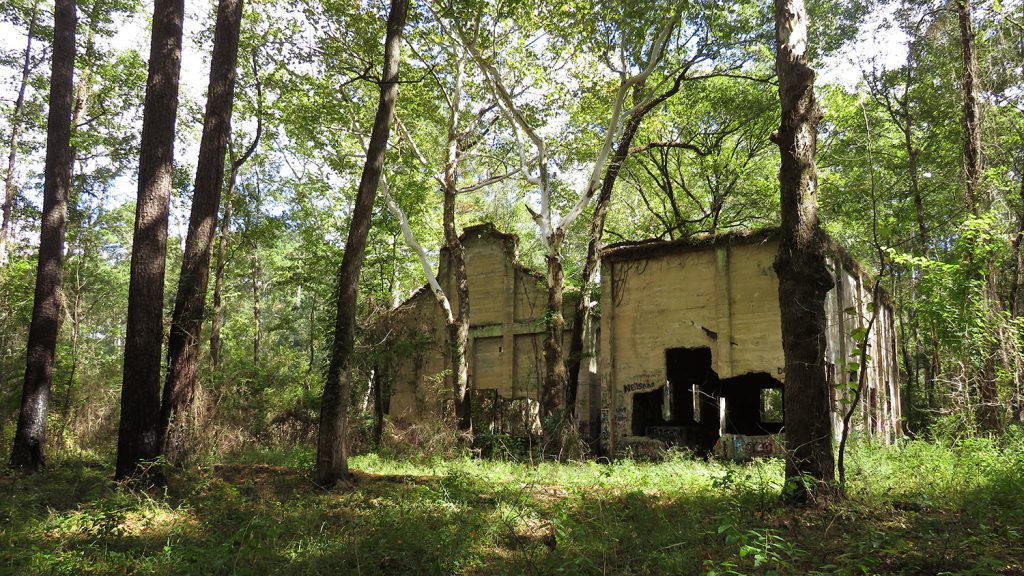
Despite efforts to conserve the species, populations of shortleaf pine have declined by 50% since 1980 and now occupy only 10% of its native range. Texas ranks third in acreage of shortleaf forests with just over 500,000 acres — after Oklahoma and Arkansas.
Longleaf was favored even more so than shortleaf. Like its relative, longleaf was known for its strong, straight grain. As stated in “Saving the Big Thicket: From Exploration to Preservation, 1635-2003” by James J. Cozine Jr.,“The longleaf pine was the monarch of the southeast Texas woods.
“It sprang 100 to 120 feet into the sky, and measured three feet in diameter at its trunk. The wood was prized for its great strength. It supplied timbers for bridge construction and trusses for large buildings.”
East Texas was one of the final bastions of old growth longleaf pine forests. Until 1880, much of the virgin stands of longleaf, located primarily in the Big Thicket of Southeast Texas, had yet to be logged.
By the turn of the century, most of them had been consumed.
Cut-down stands were converted to pasture or abandoned. Woody plants soon colonized the bare earth, preventing native pine from sprouting. Faster-growing loblolly and slash replaced the longleaf and shortleaf.
Later, suburban and urban development would remove hundreds of acres of once-longleaf and shortleaf ecosystems. Oaks, hickories, and cypresses were also sought after species.
The social impact of timber industry
Throughout the U.S., the lumber industry in Texas especially had a reputation for alienating and exploiting labor. Most of the work sites were isolated from the rest of society, allowing lumber barons to act as feudal lords.
Workers were frequently forced to live and work in segregated company towns. Low wages, long hours and frequent accidents plagued the lumbermen. Most efforts to unionize would not succeed.
According to Cozine, one of the most notorious of the lumber barons, John Henry Kirby, the namesake of Kirbyville in Jasper County, was especially militant. He invested large amounts of his fortune into the KKK and other pro segregation organizations to help break strikes.
The Louisiana-Texas lumber war of 1911-1912 was one of the largest workers’ revolts by laborers in East Texas. Several unions affiliated with the Industrial Workers of the World across the Piney Woods began organizing as early as 1906.
The movement was unique in that it recruited both Black and white laborers and achieved a degree of racial solidarity. The attempts to unionize culminated in companies carrying out violence, leaving several workers killed.
As described in “The Brotherhood of Timber Workers 1910-1913: A Radical Response to Industrial Capitalism in the Southern U.S.A.” by James R. Green, the majority of Texas lumber laborers were Black, mixed race or foreign-born.
Census data from 1910 shows that 22,347 men were employed within the Texas lumber industry. 9,492 were Black; 1,651 were foreign born; and 376 were of mixed ancestry.
A significant number of mixed race workers were of Black, indigenous and French parentage. Black workers, often migrating from the mid-South, were frequently subjected to the most dangerous conditions.
The aforementioned series of strikes would ultimately face violent repression. On July 7, 1912, company strike breakers opened fire on striking workers and their families in the community of Bon Ami, Louisiana. Three strikers were killed.
The lumber industry would also use conflict labor to fuel its profits. One example of this was the Menshew State Sawmill built in 1908. Prisoners were treated as slaves under the 13th Amendment and Texas’ convict lease system.
Much of the area is the present day community of Maydelle and the I.D. Fairchild State Forest in Cherokee County. The mill was in operation until a fire destroyed it in 1912.
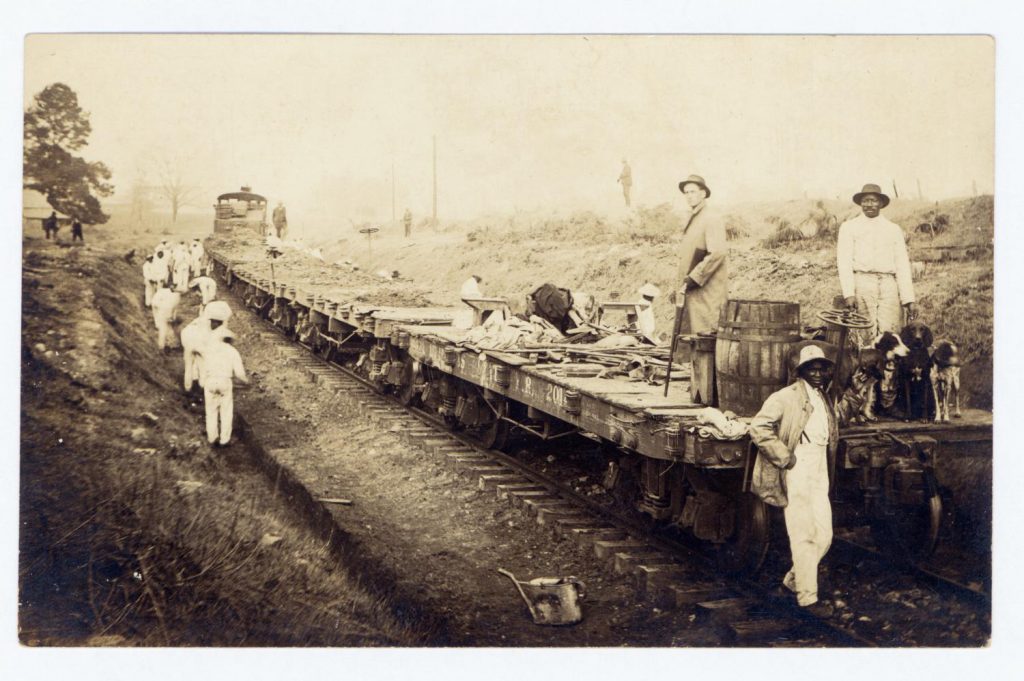
Laborers cut timber, most of it shortleaf pine, in order to construct railways and burned wood for charcoal to supply the iron foundry at nearby Rusk State Penitentiary (now Rusk State Hospital). Like many prison systems across the nation, Black men were disproportionately incarcerated. From 1870 until 1912, Texas’ prison system was 60% Black. Convict laborers would also harvest crops across the state.
Enter oil
Like the lumber industry, the petroleum industry would reach East Texas following the Civil War.
Oil’s existence was known in Texas long before industrialization. Luis de Moscoso reported it floating on the surface of the sea between High Island and Sabine Pass in 1543. Frequently, oil was discovered during attempts to drill for water.
The first commercial oil field and pipeline in the state was constructed in 1866 by Lyne T. Barret in Nacogdoches County. It would produce several thousand barrels of crude before shutting down for falling oil prices.
At the turn of the 20th century, oil would explode, becoming the state’s principal industry in short order. In 1900, the entire state of Texas produced 836,039 barrels of crude. Spindletop, discovered in Jefferson County, would produce 17 million barrels in 1902 alone.
Within three years. three additional fields — Sour Lake, Baston and Humble — would be discovered within a 150 mile radius.
The availability of oil attracted manufacturers and refineries to the state.
In 1930, the East Texas oilfield was discovered. To date, it is the largest oil reservoir in the contiguous United States, spanning Gregg, Rusk, Upshur, Smith and Cherokee counties. Since its discovery, 30,340 wells have been drilled and 5.2 billion barrels have been extracted.
Oil would have disastrous effects on native ecosystems. During the oil boom, there was little care for the environment.
In many areas where petroleum was discovered, land was cleared of forest, wetland or other habitats that stood in the way of the derricks. The trees themselves would frequently be used for the derricks themselves.
When derricks would strike oil, the initial gusher would spray crude across the landscape, often flowing for miles. Oil would also catch fire, burning towns and other landscapes.
According to Cozine, Pine Island Bayou, which forms the border of Jefferson and Hardin counties, caught fire burning, several acres of surrounding forest on one occasion.
In addition to the prized oil brought to the surface by the wells, large amounts of saltwater were pumped to the surface from the salt domes below. Careless petroleum workers allowed the saltwater to flow to the surrounding surface, seeping into waterways.
Flora and fauna would be killed due to the high saline content. Crops died in massive proportions.
Oil exploration would also result in massive sinkholes and brought poison gas to the surface.
The petroleum industry has remained a mainstay in the Texas economy, and as we will discuss in the final issue in this series, has disproportionately polluted Black and brown communities.
Deep Indigo Collective is a visual storytelling resource supporting news outlets reporting on the local impacts of environmental threats and the climate crisis. As a 501(c)(3) organization, Deep Indigo is proud to produce original visual journalism on behalf of our editorial partners across the United States.
David A. Harrison (he/his) is a Tyler native and senior at the Univerisity of Texas at Tyler studying political science. Born into a working-class family, Harrison has faced houslessness and poverty for most of his life. As a result, Harrison plans to devote his life to fighting socioeconomic inequality. After graduating December 2021, Harrison plans on pursuing a Ph.D. with the aim of analyzing policies, practices and histories in order to achieve economic, social, racial justice for all.
Love what you're seeing in our posts? Help power our local, nonprofit journalism platform — from in-depth reads, to freelance training, to COVID Stories videos, to intimate portraits of East Texans through storytelling.
Our readers have told us they want to better understand this place we all call home, from Tyler's north-south divide to our city's changing demographics. What systemic issues need attention? What are are greatest concerns and hopes? What matters most to Tylerites and East Texans?
Help us create more informed, more connected, more engaged Tyler. Help us continue providing no paywall, free access posts. Become a member today. Your $15/month contribution drives our work.






